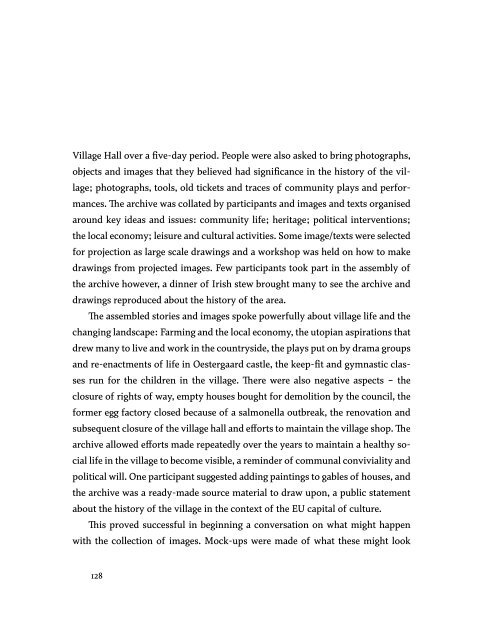Grasslands (eng)
GRASSLANDS has a sharp focus on Danish rural areas, and attempt to contribute to a more nuanced and qualified debate on rural development, through art projects.
GRASSLANDS has a sharp focus on Danish rural areas, and attempt to contribute to a more nuanced and qualified debate on rural development, through art projects.
You also want an ePaper? Increase the reach of your titles
YUMPU automatically turns print PDFs into web optimized ePapers that Google loves.
Village Hall over a five-day period. People were also asked to bring photographs,<br />
objects and images that they believed had significance in the history of the village;<br />
photographs, tools, old tickets and traces of community plays and performances.<br />
The archive was collated by participants and images and texts organised<br />
around key ideas and issues: community life; heritage; political interventions;<br />
the local economy; leisure and cultural activities. Some image/texts were selected<br />
for projection as large scale drawings and a workshop was held on how to make<br />
drawings from projected images. Few participants took part in the assembly of<br />
the archive however, a dinner of Irish stew brought many to see the archive and<br />
drawings reproduced about the history of the area.<br />
The assembled stories and images spoke powerfully about village life and the<br />
changing landscape: Farming and the local economy, the utopian aspirations that<br />
drew many to live and work in the countryside, the plays put on by drama groups<br />
and re-enactments of life in Oestergaard castle, the keep-fit and gymnastic classes<br />
run for the children in the village. There were also negative aspects – the<br />
closure of rights of way, empty houses bought for demolition by the council, the<br />
former egg factory closed because of a salmonella outbreak, the renovation and<br />
subsequent closure of the village hall and efforts to maintain the village shop. The<br />
archive allowed efforts made repeatedly over the years to maintain a healthy social<br />
life in the village to become visible, a reminder of communal conviviality and<br />
political will. One participant suggested adding paintings to gables of houses, and<br />
the archive was a ready-made source material to draw upon, a public statement<br />
about the history of the village in the context of the EU capital of culture.<br />
This proved successful in beginning a conversation on what might happen<br />
with the collection of images. Mock-ups were made of what these might look<br />
like as murals gave an idea of both the scale and the overall appearance. Learning<br />
how to reproduce the archival images and texts took place during the next visit<br />
to the village and workshops were held to allow participants to gain skills and<br />
confidence. The first mural was made on the outside of the old furniture factory<br />
in the centre of Åsted, painted from a 1982 newspaper photograph of Frilev Sieg<br />
in his Messerschmidt car. Frilev came to see the work being made, returning for a<br />
celebration to mark the first mural the next day. The fact that the work was made<br />
by a group of the villagers was important – the tools of production were not the<br />
exclusive domain of the artist, but rather with the participants.<br />
At a subsequent event, a vote was taken on what images should be reproduced<br />
for further murals and in August, participants painted five further houses in time<br />
for the European Rural Forum meeting in Oestergaard Castle. Artist Leo Sagastuy<br />
Solis, supported the group as their paintings became increasingly ambitious<br />
in scale and complexity. The space that opened up in the process allowed some<br />
discussion on the social life of the area and served as a reminder of co-learning<br />
processes that used to be a part of village life; whether making reproductions<br />
of medieval costumes for plays in the castle, house visits for communal meals.<br />
More paintings are planned for the future as the Åsted residents plan to continue<br />
to change and add to the collection over time. The ownership of the project<br />
remained in the hands of the participants – a tool with which to further <strong>eng</strong>age<br />
others in the future.<br />
None of this would have been possible without the production support of Lene<br />
Noer and the curatorial input from Lene and Birgitte. As an artist from another<br />
rural place I can bring a certain amount of perspective and experience to thinking<br />
through some of the issues, however, for the process to continue to gain traction<br />
128 129




